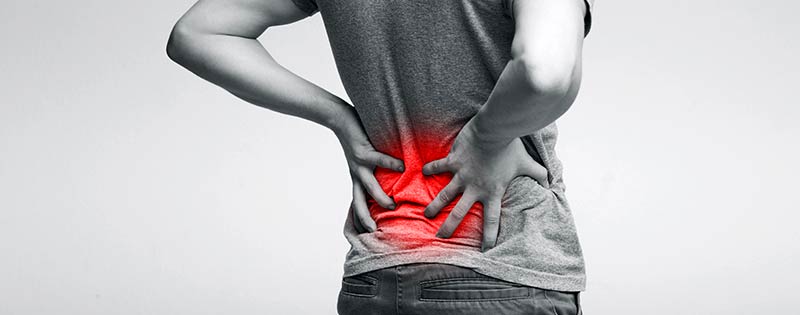by Brent Hearn •
When you see the words “injury-proof your back,” you already know one of the things we’re going to say, so let’s get it out of the way now:
Lift with your legs and not your back.
Now that you’re not waiting with breathless anticipation for us to drop that time-honored admonishment, we can move on with the advice-giving!
There’s a reason that little nugget of wisdom is repeated ad nauseam (other than the fact that it actually is great advice). Most of us will experience some degree of back pain at some point, so it’s understandable we all feel like experts. And during this time of year when so many of us are—quite literally—shaking the dust out as part of our annual spring cleaning, it’s common to find ourselves lifting, moving, and reaching in ways to which we’re not accustomed.
Keeping a good baseline level of strength and flexibility can give your body a good “support system” to reduce the risk of back injury. It’s important to maintain a strong core to ensure your back isn’t having to manage all the weight of any load-bearing activities. In other words, working those abs isn’t just an exercise in vanity; it’ll help you manage those boxes you’ll be moving to the attic and/or bags of soil you’ll be hauling to spruce up that garden.
You don’t have to work out like you’ll be starring in the next Marvel movie to maintain a strong, healthy core. In fact, you don’t necessarily have to go to the gym at all to make progress. Here are a few basic things you can consider doing to increase the strength and flexibility of your back and its supporting muscles.
Streeeeetch!
A consistent stretching routine is extremely important. It’s tempting to skip right past this one and just focus on the “real workout” stuff, but flexibility should be a key part of that workout. Yes, you’ll want to do some basic back stretches, but make them part of a holistic flexibility program. (If you’ve never tried yoga, it’s worth looking into.) Pay special attention to your hamstrings, especially, as hamstring stretches can lessen pressure on your pelvis and help relieve pain associated with sciatica.
Water Your Back
Pool-based exercises are a great low-impact activity for injury-proofing your back. The buoyancy of the water acts as a natural support for those prone to lower back pain.
Work That Cardio
If you don’t have access to a pool, any kind of low-impact cardiovascular exercise can be beneficial. Walking and low-impact aerobics are both activities that can be tailored to your current level of fitness. (You’ll want some good shoes for walking, and there are tons of workout videos on YouTube you can access for free.)
Have a Ball
Exercise ball workouts are versatile and easily tailored to your current fitness level. (Sure, they may look like giant, ridiculous toys, but they can do wonders for your core.) Simply sitting on one for extended periods can help stabilize those supporting muscles.
Remember, a little bit is better than nothing, and small, consistent progress is what you’re going for. Don’t get discouraged if you’re not happy with your current fitness level. Develop a program, stick with it, and you’ll be well on your way to having a strong, flexible, healthy back. Oh, one more thing because it bears repeating: Lift with your legs and not your back.
Before beginning a new fitness routine, consult with your physician to develop a program that takes into account your current level of fitness and any physical limitations.
Sources:
https://www.spine-health.com/blog/7-tips-protect-your-lower-back
https://health.gov/myhealthfinder/topics/everyday-healthy-living/safety/prevent-back-pain









 ▶︎
▶︎  Why is the Discount Challenge prize amount $15,024? Because that is the average “per-occurrence” fine for Medicare inducements. That’s not $15,024 per patient, that’s not per provider, that’s PER VISIT. Stinks, doesn’t it? To us, the prize amount is worth the investment if we can help our profession better understand proper discounting.
Why is the Discount Challenge prize amount $15,024? Because that is the average “per-occurrence” fine for Medicare inducements. That’s not $15,024 per patient, that’s not per provider, that’s PER VISIT. Stinks, doesn’t it? To us, the prize amount is worth the investment if we can help our profession better understand proper discounting.